Related Research Articles

Anne of the Thousand Days is a 1969 British historical drama film based on the life of Anne Boleyn, directed by Charles Jarrott and produced by Hal B. Wallis. The screenplay by Bridget Boland and John Hale is an adaptation of the 1948 play of the same name by Maxwell Anderson.
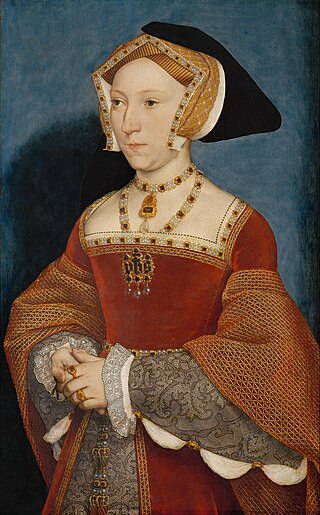
Jane Seymour was Queen of England as the third wife of King Henry VIII from their marriage on 30 May 1536 until her death the next year. She became queen following the execution of Henry's second wife, Anne Boleyn, who was accused by King Henry VIII of adultery after failing to produce the male heir he so desperately desired. Jane, however, died of postnatal complications less than two weeks after the birth of her only child, the future King Edward VI. She was the only wife of Henry to receive a queen's funeral; and he was later buried alongside her remains in St George's Chapel, Windsor Castle.
The Private Life of Henry VIII is a 1933 British film directed and co-produced by Alexander Korda and starring Charles Laughton, Robert Donat, Merle Oberon and Elsa Lanchester. It was written by Lajos Bíró and Arthur Wimperis for London Film Productions, Korda's production company. The film, which focuses on the marriages of King Henry VIII of England, was a major international success, establishing Korda as a leading filmmaker and Laughton as a box-office star.
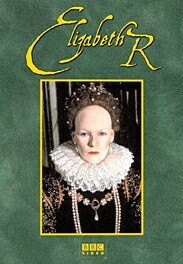
Elizabeth R is a BBC television drama serial of six 90-minute plays starring Glenda Jackson as Queen Elizabeth I of England. It was first broadcast on BBC2 from February to March 1971, through the ABC in Australia and broadcast in the United States on PBS's Masterpiece Theatre. The series has been repeated several times, most recently from 15 March 2023, by BBC Four.
Jane Boleyn, Viscountess Rochford was an English noblewoman. Her husband, George Boleyn, Viscount Rochford, was the brother of Anne Boleyn, the second wife of King Henry VIII. Jane had been a member of the household of Henry's first wife, Catherine of Aragon. It is possible that she played a role in the verdicts against, and subsequent executions of, her husband and Anne Boleyn. She was later a lady-in-waiting to Henry's third and fourth wives, and then to his fifth wife, Catherine Howard, with whom she was executed.

In common parlance, the wives of Henry VIII were the six queens consort of King Henry VIII of England between 1509 and his death in 1547. In legal terms, Henry had only three wives, because three of his marriages were annulled by the Church of England. However, he was never granted an annulment by the Pope, as he desired, for Catherine of Aragon, his first wife. Annulments declare that a true marriage never took place, unlike a divorce, in which a married couple end their union. Along with his six wives, Henry took several mistresses.
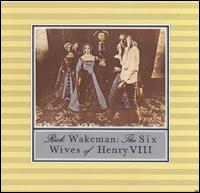
The Six Wives of Henry VIII is the second studio album by English keyboardist Rick Wakeman, released in January 1973 on A&M Records. It is an instrumental progressive rock album with its concept based on his interpretations of the musical characteristics of the wives of Henry VIII. After signing with A&M as a solo artist, Wakeman decided on the album's concept during a tour of the United States with the progressive rock band Yes. As he read a book about the subject on his travels, melodies he had written the previous year came to him and were noted down. The album was recorded throughout 1972 with musicians from Yes and The Strawbs, the group Wakeman was in prior to Yes, playing on the album.

The Boleyn Inheritance is a novel by British author Philippa Gregory which was first published in 2006. It is a direct sequel to her previous novel The Other Boleyn Girl, and one of the additions to her six-part series on the Tudor royals. * The novel is told through the first-person narratives of – Anne of Cleves, Katherine Howard, and Jane Boleyn, who was mentioned in The Other Boleyn Girl. It covers a period from 1539 until 1542 and chronicles the fourth and fifth marriages of King Henry VIII of England.
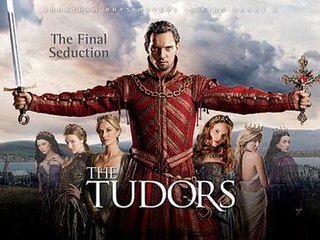
The Tudors is a historical fiction television series set primarily in 16th-century England, created and written by Michael Hirst and produced for the American premium cable television channel Showtime. The series was a collaboration among American, British, and Canadian producers, and was filmed mostly in Ireland. While named after the Tudor dynasty as a whole, it is based specifically upon the reign of King Henry VIII.

Henry VIII is a two-part British television serial produced principally by Granada Television for ITV from 12 to 19 October 2003. It chronicles the life of Henry VIII of England from the disintegration of his first marriage to an aging Spanish princess until his death following a stroke in 1547, by which time he had married for the sixth time. Additional production funding was provided by WGBH Boston, Powercorp and the Australian Broadcasting Corporation.

Henry VIII and His Six Wives is a 1972 British historical film adaptation, directed by Waris Hussein, of the BBC 1970 six-part miniseries The Six Wives of Henry VIII. Keith Michell, who plays Henry VIII in the TV series, also portrays the king in the film. His six wives are portrayed by different actresses, among them Frances Cuka as Catherine of Aragon, and Jane Asher as Jane Seymour. Donald Pleasence portrays Thomas Cromwell and Bernard Hepton portrays Archbishop Thomas Cranmer, a role he had also played in the miniseries and briefly in its follow-up Elizabeth R.
Rex is a musical with music by Richard Rodgers, lyrics by Sheldon Harnick and libretto by Sherman Yellen, based on the life of King Henry VIII. The original production starred Nicol Williamson.

The Six Wives of Henry VIII is a 2001 television documentary series about the wives of King Henry VIII presented by historian David Starkey from historic locations with added re-enactments.
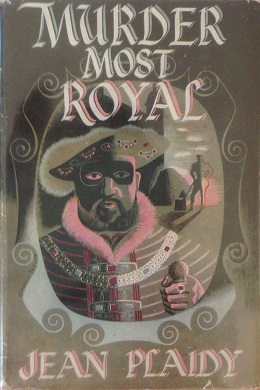
Murder Most Royal (1949) is an historical fiction novel by Jean Plaidy.

Henry VIII and his reign have frequently been depicted in art, film, literature, music, opera, plays, and television.

Catherine Howard, also spelt Katheryn Howard, was Queen of England from 1540 until 1541 as the fifth wife of King Henry VIII. She was the daughter of Lord Edmund Howard and Joyce Culpeper, a cousin to Anne Boleyn, and the niece of Thomas Howard, 3rd Duke of Norfolk. Thomas Howard was a prominent politician at Henry's court, and he secured her a place in the household of Henry's fourth wife, Anne of Cleves, where she caught the King's interest. She married him on 28 July 1540 at Oatlands Palace in Surrey, just 19 days after the annulment of his marriage to Anne. He was 49, and she was between 15 and 21 years old, though it is widely accepted that she was 17 at the time of her marriage to Henry VIII.
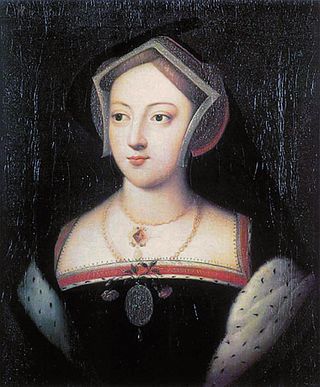
The mistresses of Henry VIII included many notable women between 1509 and 1536. They have been the subject of biographies, novels and films.
John Skut was the royal tailor during the reign of Henry VIII of England.
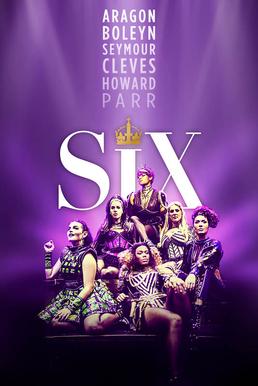
Six is a British musical comedy with music, book, and lyrics by Toby Marlow and Lucy Moss. It is a modern retelling of the lives of the six wives of Henry VIII, presented in the form of a pop concert. In the show, each of the wives take turns telling their story to determine who suffered the most from their common husband.

Catherine of Aragon was Queen of England from June 1509 until May 1533 as the first wife of King Henry VIII. She has been portrayed in film, television, plays, novels, songs, poems, and other creative forms many times, and as a result, she has stayed very much in popular memory.
References
- ↑ The Complete Directory to Prime Time Network and Cable TV Shows 1946–Present . Ballantine Books. 2003. p. 1081. ISBN 0-345-45542-8.
- 1 2 3 4 5 6 "The Six Wives of Henry VIII: Catherine of Aragon". Radio Times (2406). 20 December 1969. Retrieved 8 April 2023.
- 1 2 3 4 5 "The Six Wives of Henry VIII: Anne Boleyn". Radio Times (2408). 3 January 1970. Retrieved 8 April 2023.
- 1 2 3 "The Six Wives of Henry VIII: Jane Seymour". Radio Times (2409). 10 January 1970. Retrieved 8 April 2023.
- 1 2 3 4 "The Six Wives of Henry VIII: Anne of Cleves". Radio Times (2410). 17 January 1970. Retrieved 8 April 2023.
- 1 2 3 "The Six Wives of Henry VIII: Catherine Howard". Radio Times (2411). 24 January 1970. Retrieved 8 April 2023.
- 1 2 "The Six Wives of Henry VIII: Catherine Parr". Radio Times (2412). 31 January 1970. Retrieved 8 April 2023.
- ↑ Ives, Eric (2006). The life and death of Anne Boleyn: 'the most happy'. Oxford: Blackwell. p. 62. ISBN 978-14051-3463-7.
- ↑ "A repeat series of Elizabeth R'". Beverley Times (WA : 1905 - 1977). 4 January 1974. p. 2. Retrieved 4 November 2020.